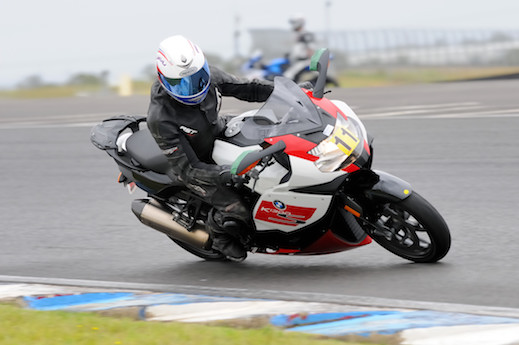Motorcycle riders often talk about the apex of a corner, but there are actually several apexes in a corner you can choose. So which one should you aim for?
The apex is the point at which you are closest to the inside of a corner.
However, it is a common myth that there is only one apex in a corner. Even on a racetrack there can be more than one apex depending on whether you are qualifying or racing and what comes after the corner.
On the road, there can be many more apexes, depending on road conditions, traffic and vision.
I’ll explain each of these, starting with the track
TRACK
QUALIFYING
Racers want to do the fastest time in qualifying, so they need to retain maximum cornering speed. Therefore, they try to reduce the acute angle of the corner arc by entering from as wide as possible, exiting as wide as possible and clipping the apex in the very middle of the corner.
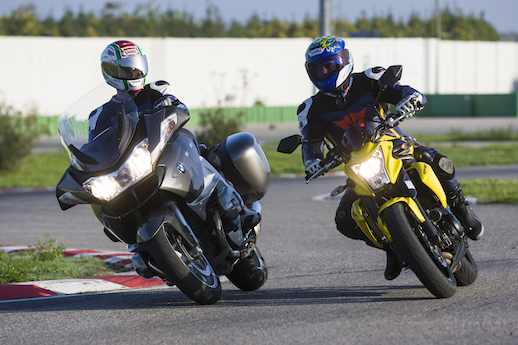
RACING
Under racing conditions, a wide entry could allow an opponent to outbrake you and a wide exit could allow someone to pass up the inside. So riders can vary their entry and exit which will change the apex point.
WHAT COMES NEXT
If the corner is followed by another corner in the opposite direction, a racer will chose a wider entry for a later apex, so they stay on the inside which becomes the outside for the following corner. If the corner is followed by another one turning the same direction, they may enter shallower and have an early apex which spits them out wider, setting them up for the next corner. If the corner is followed by a long straight, exit speed has to be maximised, so the rider will turn in later and have the bike almost straight as they exit the corner with a late apex so they have a higher terminal speed in the straight.
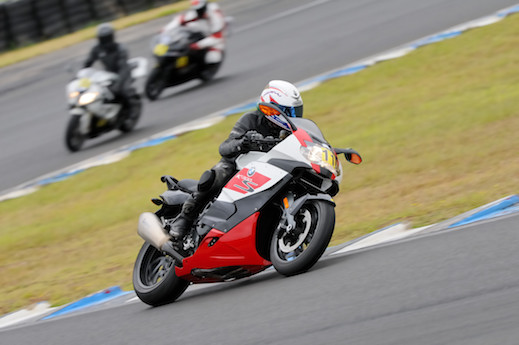
This is over-simplified and there are many other facets to choosing apexes on the track. Some of this information may be used on the road, but, of course, there are even more factors that affect your apex such as gravel, potholes, line markings, traffic etc.
ROAD
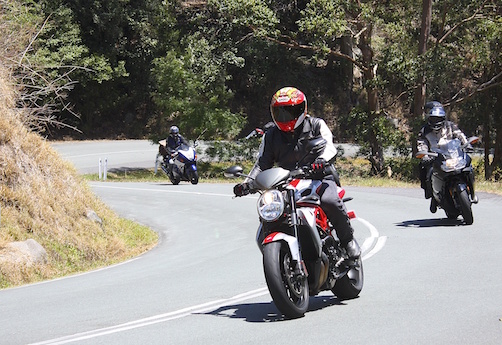
CONDITIONS
Gravel, potholes or moss at the edges of the road will limit your choice of apexes. If there is a hazard on the side of the road, it may prevent how wide you can go before entering the corner which will affect your apex near the centre line. If your apex is on the side of the road, you will need to be wide of the edge and its hazards.
TRAFFIC
On two-way roads, you can’t use all the road and you can’t even use all of your lane because traffic coming the other direction may be too close to the white line or may even come over the white line. Even if they aren’t over the white line, if you apex too close to the line, the bike will be on a lean which could put your head and shoulders over the white line and into oncoming traffic.
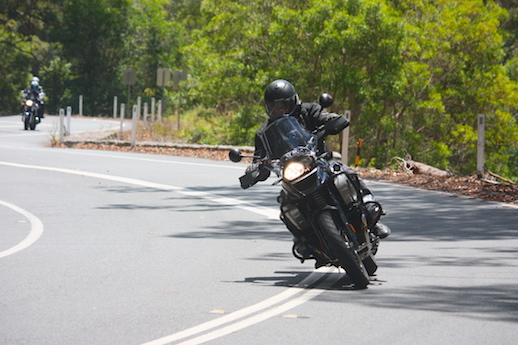
VISION
If you know the road, you may be able to choose your optimum line and apex, but if you don’t and it’s a blind corner where the exit is obscured by a cutting, then you will have to adjust your apex. In fact, you won’t be able to chose your apex until you can see the exit. A wide and late entry to the corner not only lets you see the exit sooner, but also means you are visible to oncoming traffic sooner which is safer.
CONCLUSION
There may even be other scenarios, but clearly there are enough variations to make us realise that it is a myth to talk about a corner’s apex in the singular.
That’s all good in theory, but in practice on public roads, the best apex is always a late one so you have plenty of vision and you don’t exit a corner too wide where you could run into oncoming traffic or obstacles near the side of the road.


